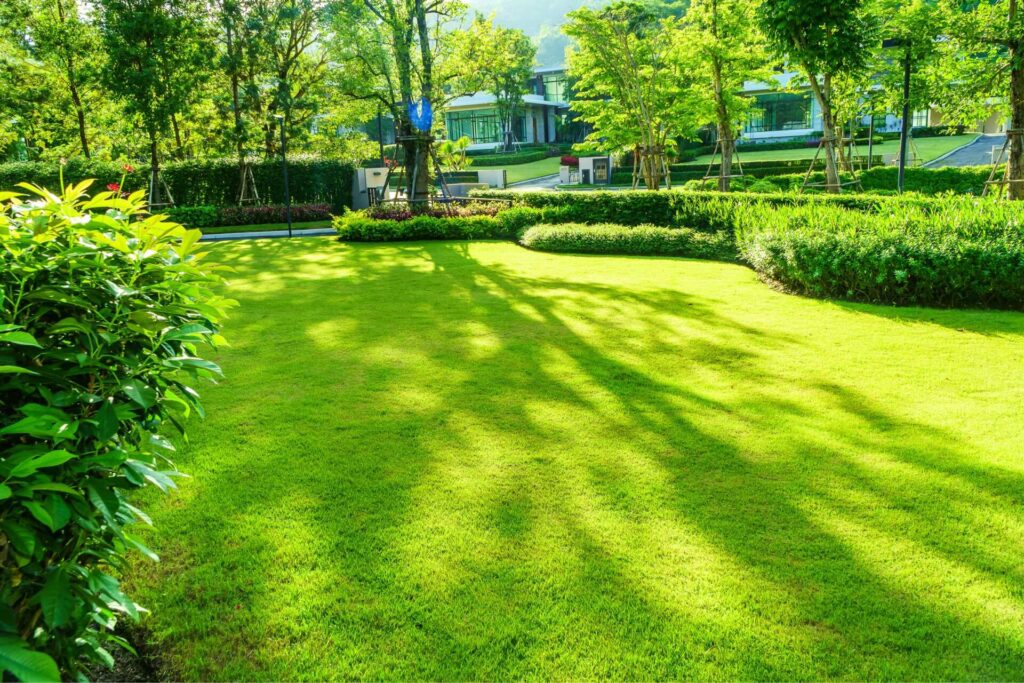
Contents
Managing weeds in Grand Rapids lawns can be a challenge, especially with the diverse range of species that thrive in the area. By understanding the most common weeds and implementing effective strategies, you can keep your lawn healthy and attractive. From proper mowing techniques to soil maintenance, every detail counts. Discover how to effectively tackle these pesky intruders and create a thriving landscape that stands out.
Key Takeaways
- Regularly monitor your lawn for early weed detection to prevent rapid spread.
- Apply organic mulch around plants to suppress weed growth and retain moisture.
- Maintain a mowing height of 2.5 to 4 inches to promote healthy grass and limit weed growth.
- Conduct soil testing to address nutrient deficiencies and enhance grass health.
- Use targeted herbicides during the active growth phase of weeds for effective management.
Identify Common Weeds in Grand Rapids
Weeds can be a gardener’s bane, particularly in Grand Rapids, where certain species thrive in the local climate. One of the most common offenders is the dandelion. For effective dandelion identification, look for its bright yellow flowers and jagged leaves, which form a rosette close to the ground.
These weeds can spread quickly, so recognizing them early is vital.
Another prevalent weed in the area is clover, with several clover varieties found in many lawns. White clover, for example, features small, round leaflets and a delicate flower head.
Identifying clover is essential, as it can blend in with your grass, making it harder to detect.
Implement Preventative Measures
To maintain a healthy lawn and minimize weed growth, you should implement preventative measures tailored to your specific environment.
Start by utilizing mulching techniques; applying organic mulch around your plants can suppress weed germination while retaining moisture in the soil. Choose a mulch that complements your lawn’s aesthetics and provides nutrients as it decomposes.
Additionally, consider seasonal planting. By selecting native grasses and plants that thrive in Grand Rapids’ climate, you’ll create a dense, competitive environment that discourages weeds. Timing your planting to align with local weather patterns will further enhance your lawn’s resilience.
Regularly monitoring your lawn for weed growth and adjusting your strategies accordingly is essential.
Utilize Proper Mowing Techniques
When you mow your lawn correctly, it enhances its appearance and plays a critical role in weed management.
Maintaining the right mowing height is essential; most grasses thrive when cut to a height of 2.5 to 4 inches. This height encourages healthy growth while shading the soil, making it harder for weeds to establish. Mowing too low can stress your grass and leave bare spots that weeds love to invade.
In addition to height, pay attention to mowing frequency. Aim to cut your grass when it reaches about one-third taller than the desired height.
Regular mowing promotes a denser lawn, which naturally suppresses weed growth by limiting sunlight and space for them to thrive. By adhering to these techniques, you’ll create a robust and healthy lawn that’s less susceptible to weed invasions, fostering a welcoming outdoor space for you and your community.
Apply Targeted Herbicides
Even with proper mowing techniques in place, some weeds may still persist in your lawn. To effectively manage these stubborn invaders, consider applying targeted herbicides.
Start by evaluating the specific weeds you’re dealing with, as this will guide your herbicide selection. Look for products that are designed for spot treatment, allowing you to target only the affected areas without harming your healthy grass.
When choosing an herbicide, verify it’s suitable for your lawn type and the particular weeds you’re facing. Always follow the manufacturer’s instructions for application rates and timing to achieve ideal results.
Applying herbicides during the weeds’ active growth phase enhances their effectiveness. Remember to wear protective gear during application and keep pets and children away until the area is safe.
Maintain Healthy Soil and Grass
Maintaining healthy soil and grass is essential for a thriving lawn, as it directly affects your grass’s resilience against weeds and other stressors.
Start with soil testing to determine nutrient levels and pH balance, enabling you to address specific deficiencies. This step ensures that you know exactly what your soil needs for ideal growth.
Once you’ve gathered your soil information, focus on grass fertilization. Choose a balanced fertilizer that matches your soil test results, promoting robust grass growth.
Fertilizing at the right times—typically in spring and fall—will enhance nutrient uptake and strengthen your lawn.
Additionally, practice proper mowing techniques to keep your grass at an ideal height, allowing it to compete effectively with weeds.
Remember to water deeply but infrequently, encouraging deep root growth.
Summary
By following these five tips, you can transform your lawn into a thriving green oasis, free from the clutches of pesky weeds. Regularly monitoring for common weed species and implementing preventative measures like mulching will pave the way for a healthier lawn. Combine this with proper mowing and targeted herbicide applications, all while nurturing your soil, and you’ll cultivate a lush landscape that stands resilient against unwanted invaders. Your lawn will flourish, a vibrant tapestry of green.
Recent Posts
Top 10 Weed Management Tips for Grand Rapids Lawns
Managing weeds in your Grand Rapids lawns requires a strategic approach. By understanding the common
Mastering Weed Control for Grand Rapids Lawns
Understanding the local weed landscape is essential to mastering weed control for your Grand Rapids
Natural Weed Control Strategies for Homeowners
Many people face challenges in maintaining a healthy garden. By adopting natural weed control strategies,